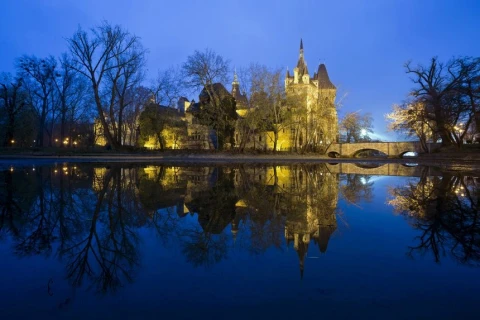
Museum and Library of Hungarian Agriculture
The Millennial festivities
The castle was built in 1896 as part of the Millennial festivities. By the end of the 19th century Hungary underwent a swift development, not just in the industrial sector, but in agriculture as well. Budapest had become one of the most significant metropolises in Europe. As part of the Millennial celebration of the Hungarian conquest of the Carpathian Basin, officials organized the festivities which lasted for several months and celebrated the history, culture and economic achievements of the country.
The agricultural sector has always been one of the most important sectors of the country’s economy, consequently the contemporary government decided to create a place showcasing the history and development of agriculture and displaying the latest technological inventions. For this purpose, on 20 July 1896, Ignác Darányi, Minister of Agriculture, signed the museum’s Deed of Foundation.
From exhibited objects to museum
When the decision about the reconstruction of the popular Vajdahunyad Castle to be built of durable material was made, there was no question about the function of the reconstructed building. Alpár already modified the construction plans in such a way as to accommodate every requirement for a museum. As a result, on 9 June 1907 the Hungarian Royal Agricultural Museum was able to occupy the building in the middle of City Park.
The museum today
Today the Museum and Library of Hungarian Agriculture displays the history of agriculture in way that is unique in Europe. Our experts curate nine permanent and a great number of temporary exhibitions. With its 40 collections it showcases the history and development of Hungarian agriculture, forestry, hunting and fishing, viticulture, domestication, Hungarian flora and horse breeding. Admire the chronologically organised stag, deer and boar trophies, some of which are world record setters. The tower tour and castle walks will provide information about the structure and the history of the castle.
The more than century-old history of the Museum and Library of Hungarian Agriculture is full of calamities and damages suffered during the two World Wars, but today it proudly continues to present Hungary's rich agricultural history and its hidden treasures.